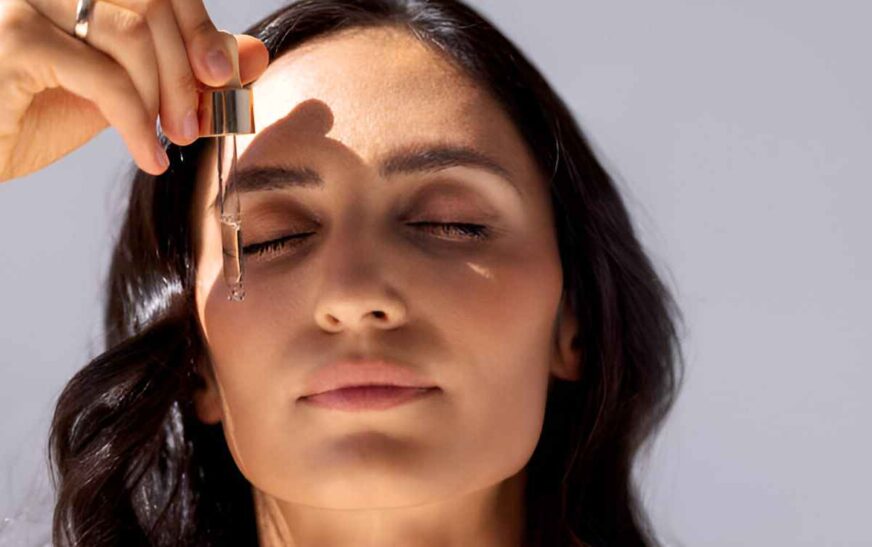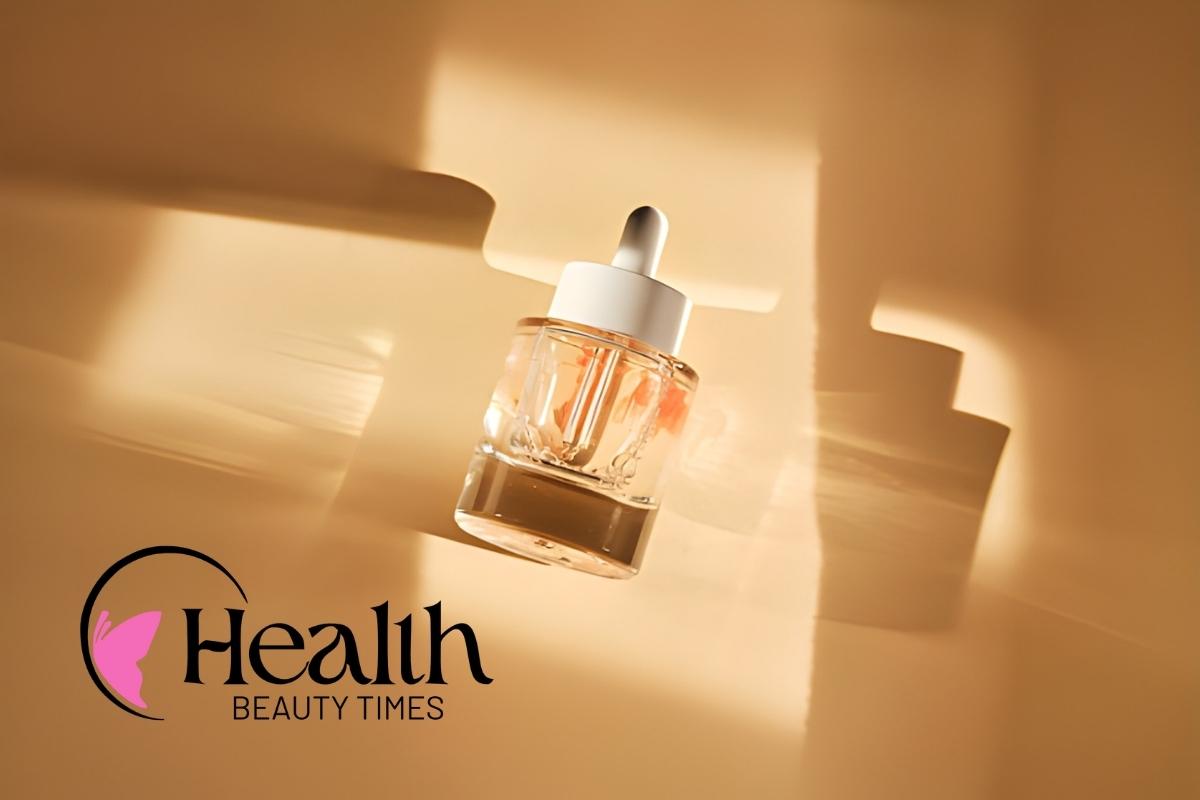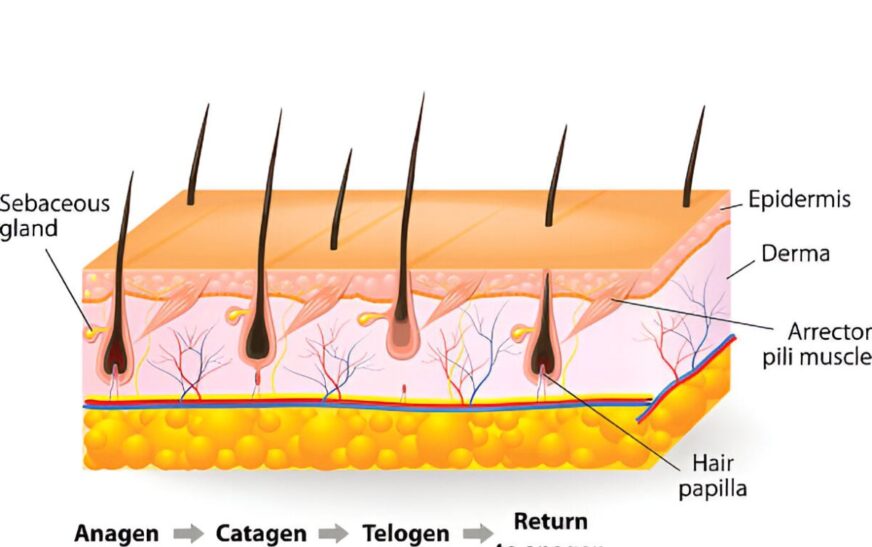Honestly, when I first heard about peptides in skincare, I rolled my eyes. Another trendy ingredient promising miracle results? But after months of research and personal testing, I’m eating my words. So, what exactly are peptides in skincare, and why should you care?
Let me tell you – these tiny molecules have become my secret weapon against aging skin, and I’m about to share the transformative power of peptides that I’ve experienced.
Let’s Start Simple: What Are Peptides?
Picture this: you’re building a house, and amino acids are your bricks. When you stack 2 to 50 of these bricks together, you get peptides – basically, short protein fragments that pack a serious punch.
Your skin naturally contains proteins like collagen and elastin (you know, the stuff that keeps us looking young and plump). As we reach our mid-twenties, our bodies begin to slow down protein production. Enter peptides – they’re like that friend who gives you a pep talk when you’re feeling lazy, except they’re motivating your skin cells to get back to work.
What I love about peptides is that they don’t force anything on me. Instead, they send gentle signals to your skin saying, “Hey, remember when you used to make tons of collagen? Let’s do that again!”
The Different Types of Skincare Peptides (And What They Do)
Not all peptides are created equal. After trying dozens of products, I’ve learned there are four main types you’ll encounter:
Signal Peptides are the motivational speakers of the bunch. They tell your fibroblasts (collagen-making cells) to step up their game. Matrixyl is the most famous one. It’s earned its reputation.
Carrier Peptides work like a delivery service, bringing essential minerals to your skin. Copper peptides fall into this category, and they’re particularly amazing for healing and skin repair. Fair warning, though – they can temporarily turn your products blue!
Neurotransmitter Peptides are fascinating. They work by gently relaxing facial muscles, which helps smooth expression lines. Think of them as a milder alternative to more intensive treatments.
Enzyme Inhibitor Peptides are the protectors. They slow down the enzymes that break down your existing collagen and elastin. It’s like having a bodyguard for your skin proteins.
My Experience with the Most Popular Peptide Ingredients
Matrixyl: The Overachiever
I’ve been using Matrixyl-containing products for over a year now, and the results speak for themselves. This peptide stimulates the production of collagen, elastin, and hyaluronic acid. It’s like getting three treatments in one ingredient.
Copper Peptides: The Healer
These caught my attention because of their wound-healing properties. I started using them after dealing with stubborn acne scarring, and I was genuinely surprised by how much they improved my skin texture and tone.
Argireline: The Expression Line Fighter
Often marketed as “topical botox” (which is a stretch, let’s be real), Argireline does help with expression lines around my eyes and forehead. The effects are subtle but noticeable over time.
What Peptides Can (And Can’t) Do for Your Skin
Let’s keep expectations realistic here. After extensive use, here’s what I’ve genuinely experienced:
The Good Stuff:
- Noticeably firmer skin texture after about 8 weeks
- Reduced appearance of fine lines, especially around my eyes
- Better skin barrier function (less dryness and irritation)
- Faster healing from minor breakouts
- Overall improvement in skin smoothness
The Reality Check:
- Don’t expect overnight miracles
- Deep wrinkles need more than peptides alone
- Results take patience – we’re talking months, not weeks
- They work best as part of a comprehensive routine
How I Use Peptide Products (The Real Deal)
Here’s my honest approach to incorporating peptides into skincare:
Start Slow: I learned this the hard way. Even gentle peptides can irritate if you dive in too quickly. Begin with every other night, then gradually increase frequency.
Timing Matters: I prefer using peptide serums at night because that’s when skin repair is at its peak. Your mileage may vary, but evening application makes sense to me.
Layer Smart: Cleanse your skin first, then apply peptides, and finally, heavier moisturizers. I’ve found this order gives the best absorption.
Patience is Everything: This was probably the hardest lesson. I didn’t see real results until week 10 of consistent use. Now, six months in, the difference is undeniable.
My Current Peptide Routine
Evening: Gentle cleanser → Peptide serum → Hyaluronic acid → Night moisturizer Morning: Same serum occasionally, but always followed by SPF 30+
The key is consistency. I use my peptide serum 5-6 nights per week, and it’s become as automatic as brushing my teeth.
Real Results: My Personal Peptide Case Study
Let me share some actual numbers from my experience with a Matrixyl-based serum over 16 weeks:
- Week 4: Honestly, nothing dramatic. It could be a slightly smoother skin texture.
- Week 8: Started noticing my forehead lines weren’t as prominent in photos.
- Week 12: Friends began asking if I’d done something to my skin.
- Week 16: Significant improvement in skin firmness and overall appearance. These gradual but significant changes are a testament to the power of peptides and the importance of patience in your skincare routine.
What surprised me most was that the improvements continued to come. Even now, several months later, I’m still seeing gradual enhancements in skin quality.
The biggest change? My skin looks healthier overall. It’s hard to quantify, but there’s a vitality that wasn’t there before.
Choosing Products That Work
After trying probably 20+ peptide products, here’s what I’ve learned about shopping smart:
Read the Ingredient List: Look for specific peptide names, not just “peptides.” Matrixyl, copper peptides, and Argireline should be listed clearly.
Concentration Counts: Effective products typically contain 3-5% Matrixyl or 1-3% copper peptides. If percentages aren’t listed, that can sometimes be a red flag.
Packaging Matters: Peptides break down in light and air. I always choose products in dark, airless pump bottles when possible.
Price Doesn’t Equal Quality: Some of my best results came from affordable drugstore options. Don’t assume expensive means better.
Budget-Friendly Options That Work
You don’t need to spend your entire paycheck on effective peptide skincare. Here are my tested favorites that are not only effective but also budget-friendly:
Under $20: The Ordinary “Buffet” serum contains multiple peptides and consistently delivers results.
$20-40: Olay Regenerist Micro-Sculpting Serum has been around forever for a reason – it works.
$40-60: Paula’s Choice peptide products are science-backed and effective without breaking the bank.
I’ve gotten excellent results across all price points. The key is finding formulations that work with your skin, regardless of cost.
Mixing Peptides with Other Skincare Ingredients
This is where things get interesting. Peptides play surprisingly well with most other ingredients:
Dream Teams:
- Peptides + Niacinamide = improved skin texture and barrier function
- Peptides + Hyaluronic acid = plump, hydrated skin
- Peptides + Vitamin C = antioxidant protection plus collagen stimulation (use at different times)
Proceed with Caution:
- Strong acids (glycolic, salicylic) might interfere with peptide effectiveness
- Retinol and peptides can work together, but introduce them slowly
I use retinol twice a week and peptides the other nights. This routine has yielded the best results without irritating.
Common Mistakes I Made (So You Don’t Have To)
Expecting Magic: I initially wanted to see results in two weeks. Peptides are marathon runners, not sprinters.
Overloading My Skin: When I first discovered peptides, I wanted to use every peptide product available. Less is more.
Inconsistent Application: Skipping nights here and there significantly slowed my progress. Consistency is crucial.
Ignoring Sun Protection: All the peptides in the world won’t help if you’re not protecting existing collagen with daily sunscreen.
The Science Behind Why Peptides Work
Without getting too technical, here’s what’s happening at the cellular level:
When collagen breaks down naturally (through aging, sun damage, etc.), it creates specific peptide fragments. Your skin recognizes these fragments as a signal that collagen has been damaged and needs replacement.
Topical peptides mimic these natural signals, essentially “tricking” your skin into thinking it needs to produce more collagen. It’s a gentle, natural process that works with your skin’s existing repair mechanisms.
This is why results take time – you’re stimulating natural processes, not forcing immediate changes.
Looking Ahead: The Future of Peptide Technology
The peptide space is evolving rapidly. Newer delivery systems are improving penetration, and scientists are developing more targeted peptides for specific concerns.
I’m particularly excited about biomimetic peptides that more closely mimic our natural skin proteins, as well as encapsulation technology that keeps peptides stable for extended periods.
Frequently Asked Questions About Peptides in Skincare
What are peptides in skincare, and how do they compare to retinol? Peptides are gentler than retinol and work by stimulating collagen production rather than increasing cell turnover. They’re ideal for sensitive skin or those who can’t tolerate retinoids. While retinol may yield faster initial results, peptides offer steady, long-term improvements.
How long will it take to see results from peptide skincare? Based on my experience, expect subtle improvements around 6-8 weeks and more significant changes by 12-16 weeks. The timeline varies from individual to individual, but patience is essential.
Can I use peptides every day? Most people can, but I recommend starting slowly. I use peptides 5-6 times per week with excellent results. Daily use is acceptable once your skin adjusts.
Are expensive peptide products worth it? Not necessarily. I’ve had excellent results with budget-friendly options. Focus on proven peptides, such as Matrixyl, rather than brand names.
Do peptides work for acne-prone skin? Yes, especially copper peptides, which have anti-inflammatory properties. However, avoid heavy, occlusive peptide creams if you’re acne-prone. Lightweight serums work better.
Can men benefit from peptide skincare? Absolutely. Aging affects everyone, and men often see dramatic results because they typically start anti-aging routines later in life.
What’s the difference between plant-based and synthetic peptides? Both can be effective. Synthetic peptides are often more stable and researched, while plant-derived peptides appeal to those preferring natural ingredients. Results matter more than source.
Should I stop other anti-aging ingredients when starting peptides? Not usually, but introduce peptides gradually if you’re already using retinol or acids. I successfully combine peptides with other actives by spacing them appropriately.
My Final Thoughts on Peptides in Skincare
After this journey with peptides, I’m convinced they deserve a place in most anti-aging routines. They’re not miracle workers, but they offer real, measurable improvements with minimal risk of irritation.
The key is managing expectations and staying consistent. These aren’t quick fixes – they’re long-term investments in your skin’s health and appearance.
What are peptides in skincare? They’re your skin’s gentle motivators, working behind the scenes to support natural repair processes and help you maintain your best appearance as you age. And honestly? That’s exactly what I want from my skincare routine.
Don’t Miss These: Powerful Skincare Steps Every Man Should Follow (Even If You’re Lazy)






